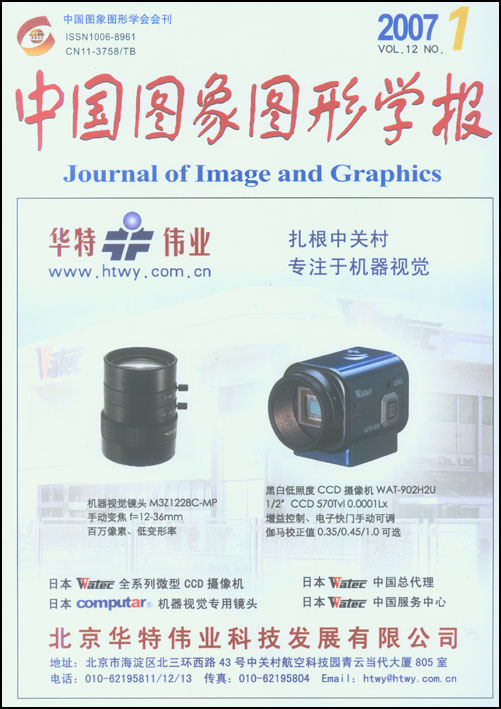
基于SVD的相位相关方法在空间运动目标检测中的应用
摘 要
相位相关方法是在两幅相似图像之间检测纯平移运动的一种比较传统的直接估计法,但由于它庞大的计算量使它无法满足实时系统的要求,并且它只能进行整数平移值的检测,因此需找到一种更好的运动估值方法.由于相位相关矩阵在没有噪声干扰的纯平移运动中是一个秩为1的矩阵,所以根据这一性质,提出了一种低复杂度的亚像素平移运动检测方法--基于奇异值分解(SVD)的相位相关方法.该方法是根据傅里叶变换的平移性质,利用最小二乘法进行线性度估计,其运算速度较传统的相位相关方法提高了近3倍.由于它利用的是频域的相位信息,对图像灰度不敏感,因此它具有很强的噪声抑制能力和抗遮挡能力,使它不仅更适合应用于受噪声和云层污染严重的空间目标的平移检测,而且能实现空间目标的精确定位.
关键词
Application of Phase Correlation in the Spacial Object Orientation Based on SVD
() Abstract
The phase correlation method provides straightforward estimation of rigid translational motion between two similar images. It is often claimed that the original method is best suited to identify integer pixel displacement. Experimental results show that the phase correlation matrix is rank one for a noise-free rigid translation model. The property leads to a new low complexity method for non-integer translational motion. This method based on singular value decomposition estimates the slope of phase by a least-squares fit and well-known Fourier shift property whose speed is nearly three times as quickly as original method. The method is robust in the presence of noise and shelter because of using phase information in the frequency domain. Experiments prove that this method can effectively restrain noise and accurately detect the shift of object sheltered, which resolved the problem of object shift detection for images seriously polluted by noise and cloud in the space. It provides a strong basis for accurate object orientation.
Keywords
|



 中国图象图形学报 │ 京ICP备05080539号-4 │ 本系统由
中国图象图形学报 │ 京ICP备05080539号-4 │ 本系统由